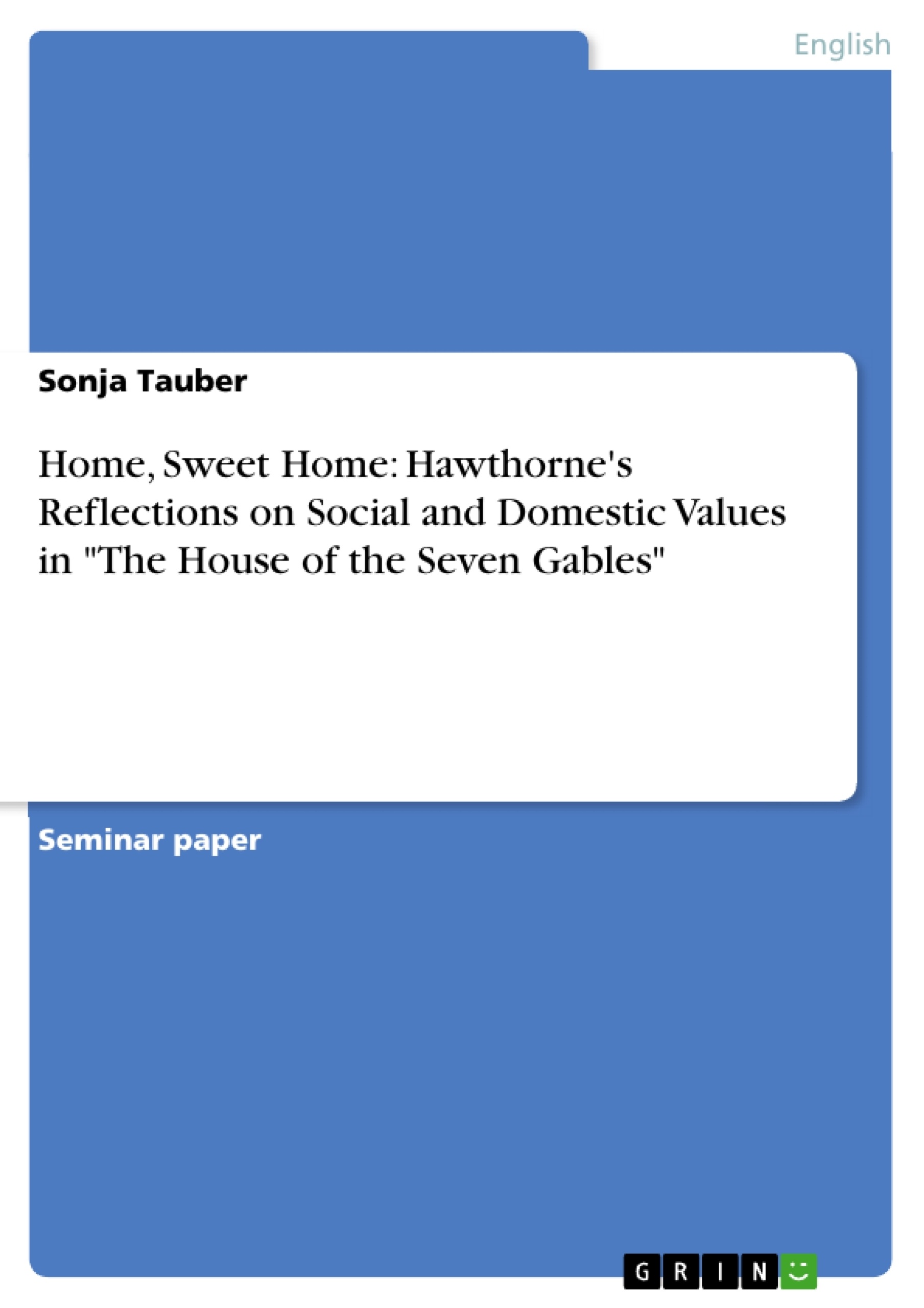Nathaniel Hawthorne may be best known for his first novel, "The Scarlett Letter", which is also considered to be the author’s masterpiece. Hawthorne’s second novel, in contrast, has often raised heated debates among critics. Unlike its literary forerunner, "The House of the Seven Gables" provides the reader with a rather cheerful ending. Soon after its first publication, most readers responded positively to the novel’s closure, since they were “already accustomed to the conventions of the domestic novel” (Gallagher 1989: 10). Sophia Hawthorne clearly favoured her husband’s second novel and praised the tale’s ending for its deep-seated “home-loveliness”. Some years later, however, the reviews became less enthusiastic. Many critics began to complain about its rather optimistic and conservative closure. It was often argued that the novel’s cheerful ending “[…] fails to offer a resolution to the social problems” (Goddu 1991:119), which the author so anxiously denounces beforehand. Some modern reviews also accuse Hawthorne of re-establishing hereditary rights in his novel’s ending – and thereby affirming the power of the wealthy.
The following paper will examine the social and domestic values offered in the "The House of the Seven Gables", in order to re-evaluate Hawthorne’s narrative in the context of its time. Since the novel’s historical dimension cannot be ignored, this work will also review the importance of the house in antebellum America with regard to its public and private function.
Inhaltsverzeichnis (Table of Contents)
- Introduction
- The Necessity of Domestic Comfort and Privacy
- Architectural Requirements
- Emotional Requirements
- The Necessity of Social Stability
- The Necessity of Human Interaction
- Family Bliss versus Isolation
- Democratic Exchange versus Aristocratic Seclusion
- Conclusion
Zielsetzung und Themenschwerpunkte (Objectives and Key Themes)
This paper examines the social and domestic values presented in Nathaniel Hawthorne's The House of the Seven Gables, re-evaluating the novel within its historical context. It explores the significance of the house in antebellum America, considering its public and private functions.
- The importance of domestic comfort and privacy in antebellum American society
- Hawthorne's critique of the "cult of domesticity" and its implications for social and domestic values
- The role of architecture and its symbolism in shaping domestic life and social hierarchies
- The interplay between individual and collective needs in achieving a balanced social and domestic life
- The evolving relationship between the house and its inhabitants, reflecting changing social dynamics
Zusammenfassung der Kapitel (Chapter Summaries)
The introductory chapter presents The House of the Seven Gables as a novel that challenged traditional interpretations of domesticity. While initially praised for its cheerful ending, the novel later attracted criticism for its perceived conservatism and perceived reaffirmation of hereditary rights.
The second chapter focuses on the importance of domestic comfort and privacy. It explores the architectural requirements of a "good house" in antebellum America, contrasting the ideal with the reality of the dilapidated house in the novel.
Schlüsselwörter (Keywords)
The primary keywords and focus topics of this work include: domesticity, social values, antebellum America, architecture, The House of the Seven Gables, Nathaniel Hawthorne, gothic revival, privacy, social stability, human interaction, family, isolation, democratic exchange, aristocratic seclusion.
- Quote paper
- Sonja Tauber (Author), 2008, Home, Sweet Home: Hawthorne's Reflections on Social and Domestic Values in "The House of the Seven Gables", Munich, GRIN Verlag, https://www.grin.com/document/280418



